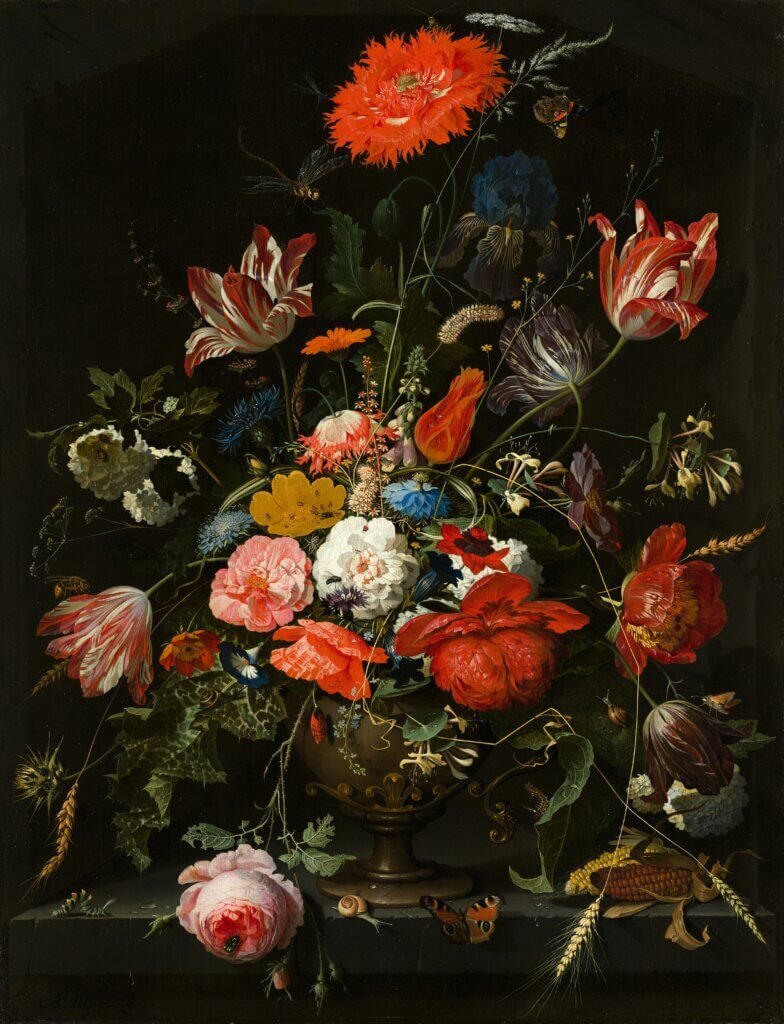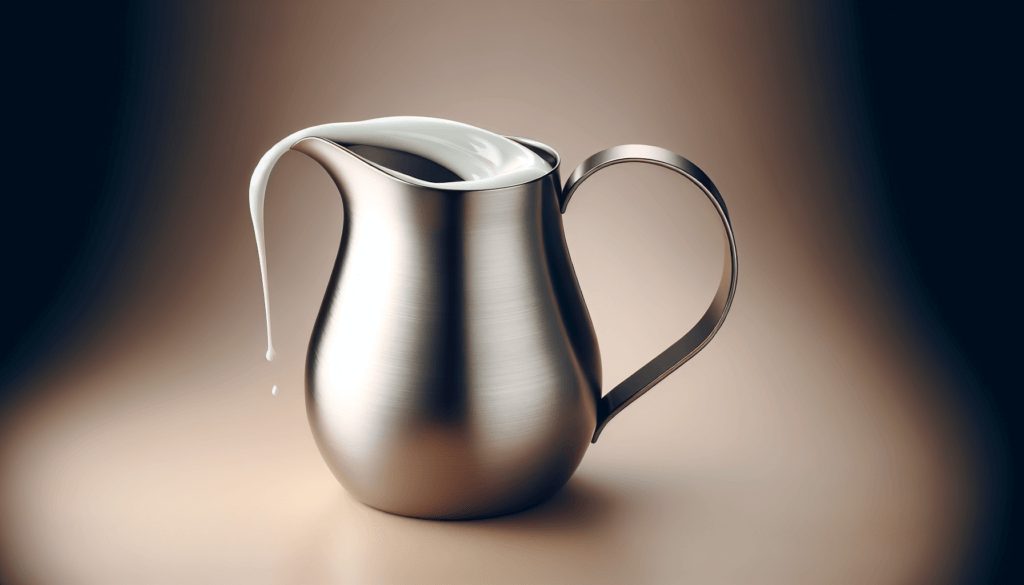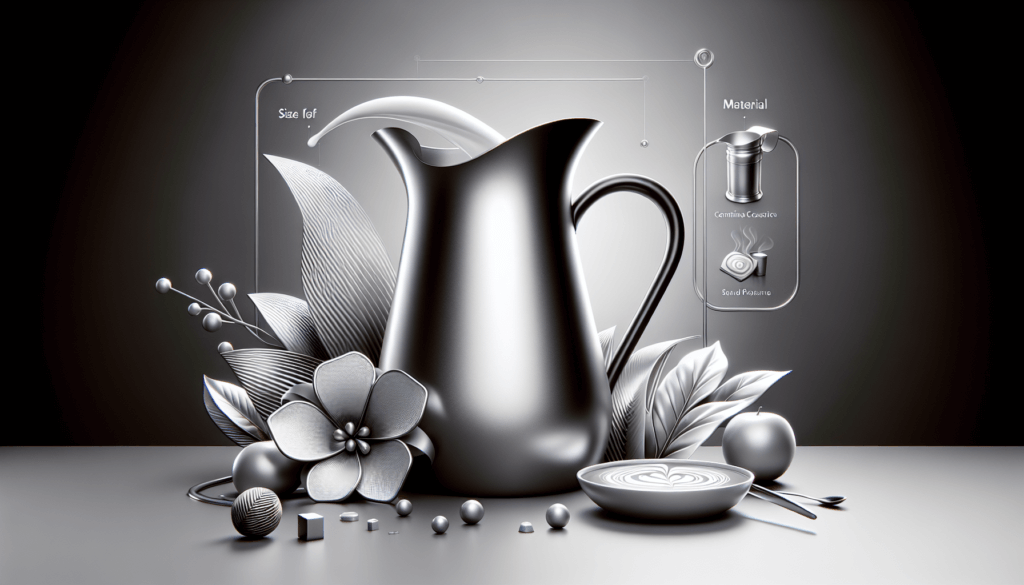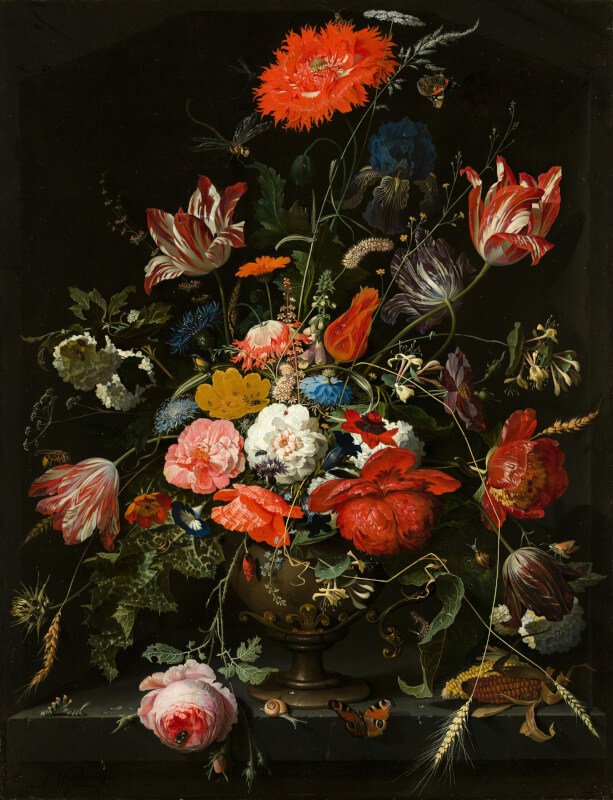Are you a coffee lover with a passion for latte art? If so, you’ve probably realized how crucial it is to have the perfect milk pitcher. In this article, we’ll explore the essential factors to consider when choosing the right milk pitcher for your latte art creations. From size and material to spout design and handle comfort, we’ll guide you through the process of finding a pitcher that will elevate your latte art to the next level. So get ready to transform your morning coffee routine into a work of art!

Types of Milk Pitchers
There are a few different types of milk pitchers available on the market, each with its own advantages and disadvantages. The three most common types are stainless steel pitchers, glass pitchers, and ceramic pitchers.
Stainless Steel Pitchers
Stainless steel pitchers are a popular choice among baristas and coffee enthusiasts for several reasons. Firstly, stainless steel is known for its durability and longevity, making it a reliable option for everyday use. Additionally, stainless steel pitchers are often dishwasher safe, making them easy to clean. They also have the advantage of being resistant to wear and tear, meaning they will last for a long time. Stainless steel pitchers are also great at retaining heat, which is essential for creating frothy milk for your latte art.
Glass Pitchers
Glass milk pitchers can be an excellent choice for those who appreciate aesthetics. The transparency of the glass allows you to see the milk and monitor its consistency as you steam and froth it, making it easier to achieve the desired texture. Glass pitchers are also easy to clean, as they can be washed in the dishwasher. However, it’s important to note that glass pitchers may not retain heat as well as stainless steel pitchers, so keep that in mind if maintaining a specific temperature is important to you.
Ceramic Pitchers
Ceramic milk pitchers are often favored for their unique and stylish designs. With a wide variety of colors and patterns available, ceramic pitchers can add a touch of personality to your coffee setup. They are typically durable and dishwasher safe, although you should check the manufacturer’s instructions to ensure proper care. Ceramic pitchers may not retain heat as well as stainless steel, so if heat retention is a priority for you, a ceramic option may not be the best choice.
Considerations Before Choosing
Before you select a milk pitcher, there are a few important factors to consider in order to find one that suits your needs perfectly.
Size
The size of the milk pitcher you choose will depend on the volume of milk you typically use for your coffee drinks. Consider your usual serving size and whether you often make drinks for multiple people. Milk pitchers typically come in various sizes, ranging from 12 ounces to 32 ounces or more. It’s essential to choose a pitcher that can comfortably accommodate the amount of milk you require.
Spout Design
The spout design of a milk pitcher is crucial for achieving the desired latte art. Some pitchers have a narrow spout, which allows for more precise pouring. This is especially important if you like to create intricate designs on the surface of your drinks. On the other hand, pitchers with wide spouts offer better control and can make pouring milk into your coffee easier. Consider which style of latte art you prefer and choose a pitcher with a corresponding spout design.
Handle Design
The handle design of a milk pitcher can greatly impact your pouring technique and overall comfort while using the pitcher. Look for a pitcher with an ergonomic handle that fits comfortably in your hand. This will make it easier to control the pouring and reduce the risk of spills. Additionally, pay attention to the size and grip of the handle. A larger handle with a firm grip will allow for better control and stability.
Durability
When choosing a milk pitcher, it’s important to consider its durability. Look for pitchers made from high-quality materials that are designed to withstand regular use. Stainless steel and ceramic pitchers are typically more durable than glass pitchers, but this may vary depending on the specific products. Additionally, check if the pitcher is dishwasher safe, as this can make cleaning much more convenient.
Price
Setting a budget is an essential step in choosing a milk pitcher. Prices can vary significantly depending on the materials used, brand reputation, and additional features the pitcher may have. It’s important to consider both the quality and the price when making your decision. While a more expensive milk pitcher may offer greater durability and additional features, it’s also possible to find more budget-friendly options that still meet your needs.
Size of the Milk Pitcher
Choosing the right size for your milk pitcher is crucial to ensuring you have enough space to froth your milk properly and create beautiful latte art designs.
Choosing the Right Capacity
The capacity of a milk pitcher refers to the volume of milk it can hold. The size you choose will depend on your typical serving size and how many drinks you plan to make at once. If you usually make a single drink, a smaller pitcher with a capacity of 12 to 20 ounces should be sufficient. However, if you frequently entertain guests or make multiple drinks at once, a larger pitcher with a capacity of 32 ounces or more may be more suitable for your needs.
Consideration for Latte Art Designs
If creating intricate latte art designs is a priority for you, it’s important to choose a milk pitcher with enough space to allow for proper pouring and milk frothing. Larger pitchers with more substantial capacities provide more room for the milk to swirl and mix, which can help create the perfect texture for latte art. However, if you prefer smaller, more detailed designs, a pitcher with a smaller capacity may be more appropriate.
Spout Design
The spout design of a milk pitcher can significantly impact your latte art creations and pouring technique. Different spout designs offer varying levels of control and precision.
Narrow Spout for Precision
If you enjoy creating intricate and detailed latte art designs, a milk pitcher with a narrow spout is ideal. The narrow opening allows you to pour the milk with more precision, making it easier to control the flow and create delicate lines and shapes on the surface of your coffee. This type of spout is especially beneficial if you prefer to create intricate patterns such as hearts, rosettas, or free-pour designs.
Wide Spout for Better Control
On the other hand, if you prefer a more straightforward pouring technique, a milk pitcher with a wider spout may be better suited to your needs. A wider spout provides better control and allows for a faster pour, making it easier to distribute the milk evenly across the surface of your drink. This type of spout is particularly useful if you often make larger quantities of coffee and prioritize efficient pouring over intricate latte art designs.

Handle Design
The handle design of a milk pitcher plays a significant role in your overall comfort and control while using it. Look for a handle that is ergonomic, fits comfortably in your hand, and allows for a firm grip.
Ergonomic Handle for Comfort
An ergonomic handle is designed to fit the natural shape of your hand, making it more comfortable to hold and pour. Look for a milk pitcher with a handle that has a curvature matching the shape of your hand, as this design provides better support and reduces fatigue during prolonged use. Ergonomic handles can make a significant difference in your pouring technique, allowing for smoother and more precise movements.
Handle Size and Grip
In addition to ergonomic design, the size and grip of the handle are also important factors to consider. A larger handle with a firm grip allows for better control and stability while pouring. It’s essential to choose a milk pitcher with a handle that accommodates your hand size comfortably and provides a secure grip. This will reduce the risk of spills and accidents, allowing you to pour with confidence and precision.
Durability
The durability of a milk pitcher is an important consideration, as you want it to withstand regular use without wearing out or breaking. Several factors contribute to the overall durability of a milk pitcher.
Material Quality
The material the pitcher is made from is a significant factor in determining its durability. Stainless steel pitchers are known for their strength and durability, making them an excellent choice for long-term use. They are resistant to corrosion, scratching, and bending, ensuring they will withstand the rigors of everyday use. Glass pitchers are also typically durable, but they are more prone to breaking if mishandled. Ceramic pitchers can be durable as well, but the quality of the ceramic will vary depending on the manufacturer.
Dishwasher Safe
A dishwasher-safe milk pitcher is not only convenient but also contributes to its durability. Cleaning a milk pitcher by hand can be time-consuming and may increase the risk of accidental damage. Choosing a pitcher that is labeled as dishwasher safe ensures it can withstand the high heat and agitation of a dishwasher, making it easier to clean and prolonging its lifespan.
Resistance to Wear and Tear
Regular use and cleaning can take a toll on a milk pitcher over time. Look for a pitcher that is resistant to wear and tear, as this will ensure it remains in good condition even with prolonged use. Stainless steel pitchers are known for their resistance to scratching, dents, and stains, making them an excellent choice if durability is a top priority.

Price
When choosing a milk pitcher, it’s important to consider your budget and find a balance between price and quality.
Setting a Budget
Before starting your search for a milk pitcher, it’s helpful to set a budget for yourself. Decide how much you’re willing to spend and stick to that range while exploring different options. Keep in mind that higher-priced pitchers may offer additional features, better durability, or brand reputation, whereas budget-friendly options may still provide adequate quality for your needs. Consider what features are most important to you and base your budget on those priorities.
Quality vs Price
While it can be tempting to opt for the cheapest milk pitcher available, it’s important to consider the overall quality and long-term value. The cheapest option may not always be the most durable or provide the best pouring experience. Aim for a balance between quality and price, ensuring the milk pitcher you choose meets your needs while remaining within your budget. Consider reading customer reviews and researching the materials and construction of different pitchers to make an informed decision.
Material Comparison
When choosing a milk pitcher, it can be helpful to compare the different materials available – stainless steel, glass, and ceramic.
Stainless Steel vs Glass vs Ceramic
Stainless steel milk pitchers are often the top choice among professionals and coffee enthusiasts. They are highly durable, resistant to wear and tear, and excellent at retaining heat. Glass milk pitchers offer the advantage of allowing you to monitor the milk’s consistency and texture as you steam and froth it. They are also easy to clean and can provide an aesthetically pleasing look. Ceramic milk pitchers are known for their unique designs and can add a touch of personality to your coffee setup. However, they may not retain heat as effectively as stainless steel and can be more prone to chipping or breaking if mishandled.
Consider your priorities in terms of durability, heat retention, aesthetics, and overall functionality to make the best decision for your needs.

Brand Reputation
Before purchasing a milk pitcher, it can be helpful to research the reputation of different brands. A reputable brand is more likely to provide high-quality products and reliable customer service.
Researching Brands
Look for brands that specialize in coffee accessories and have a good reputation in the industry. Read customer reviews, check for certifications, and see if the brand has been recognized for its quality and innovation. You can also ask for recommendations from fellow coffee enthusiasts or baristas to get insights from those with firsthand experience.
Customer Reviews
Customer reviews can provide valuable insights into the quality, durability, and overall satisfaction of a milk pitcher. Look for reviews from verified purchasers to ensure their experiences are genuine. Pay attention to both positive and negative reviews to get a well-rounded perspective and consider how specific features or issues mentioned may align with your own preferences and needs.
Conclusion
Choosing the right milk pitcher for your latte art endeavors requires careful consideration of factors such as material, size, spout design, handle design, durability, and price. Stainless steel pitchers provide durability and heat retention, glass pitchers offer visual monitoring and easy cleaning, while ceramic pitchers add style and personality. Consider your serving size and latte art preferences when deciding on the pitcher’s size and spout design. Look for an ergonomic handle with a comfortable grip to ensure ease of use. Durability, including material quality and dishwasher compatibility, is crucial for a long-lasting pitcher. Setting a budget and finding a balance between price and quality is also important. Comparing materials and researching brand reputations can further guide your decision-making process. By considering all these factors, you can select the perfect milk pitcher that not only meets your needs but also enhances your latte art experience.



